Strictly speaking this blog should be called ‘from the Coromandel Coast to the Coromandel Peninsula’ as our final location in New Zealand was named after the coast on which we are now staying, or rather after the Royal naval vessel HMS Coromandel, which stopped at the harbour in New Zealand in 1820. The very name ‘Coromandel Coast’ has always had for me a dreamlike magic redolent of cardamon, cloves and of Edward Lear’s Yonghy Bonghy Bo. More prosaically, the name is a corruption by early European travellers of the Tamil name of the region called after the ancient Chola dynasty. It was along the Coromandel Coast road that we drove towards Chennai after leaving the comfortable Shengbagha Palace, where preparations for Christmas were already taking place.
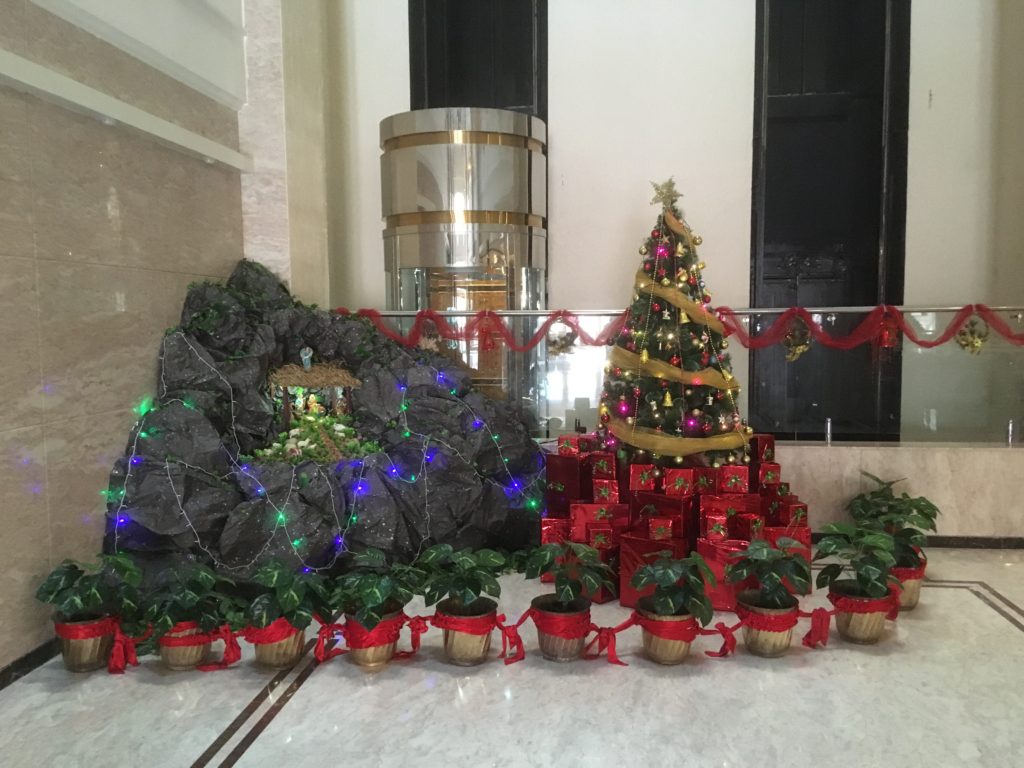
On the whole it appeared to be a fertile and fairly prosperous region, containing small farms with mixed crops, palmgroves, paddy fields and some cattle. Sightings of the sea were virtually non-existent, though now and again we crossed stretches of water that were large inlets from the sea.
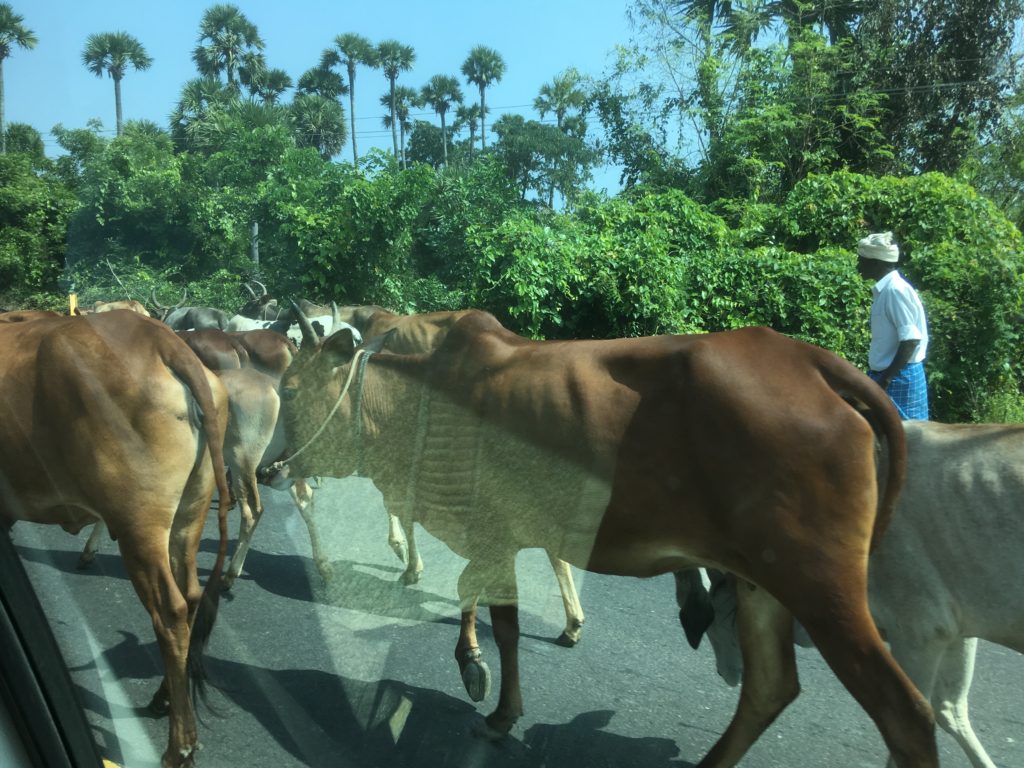
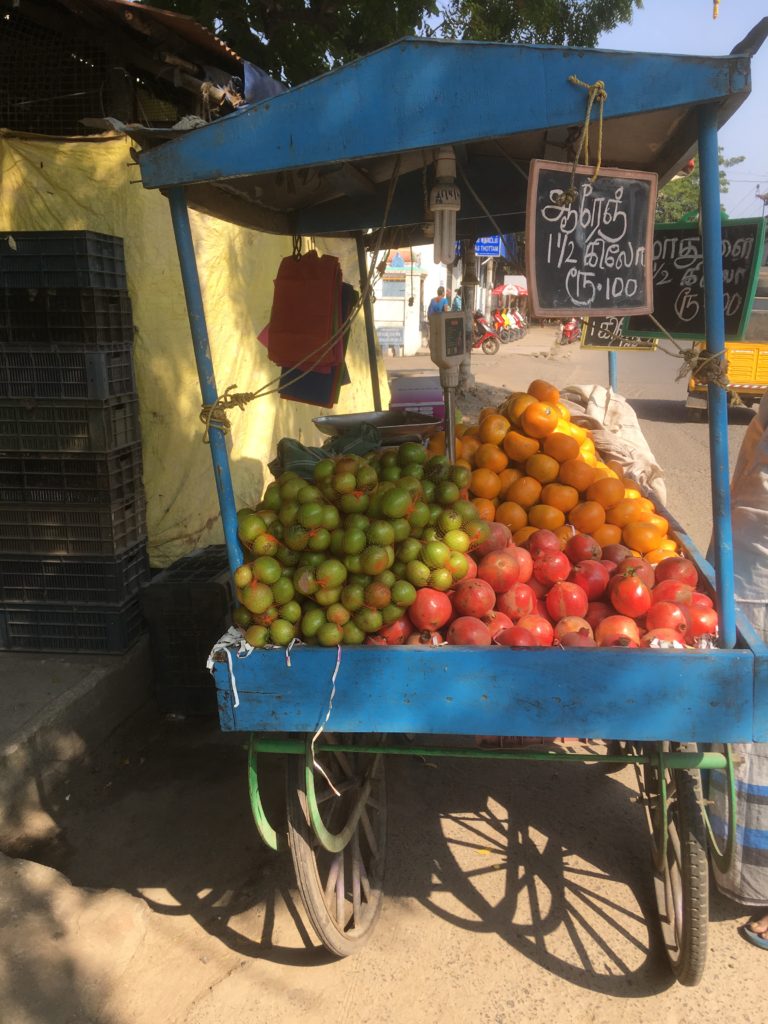
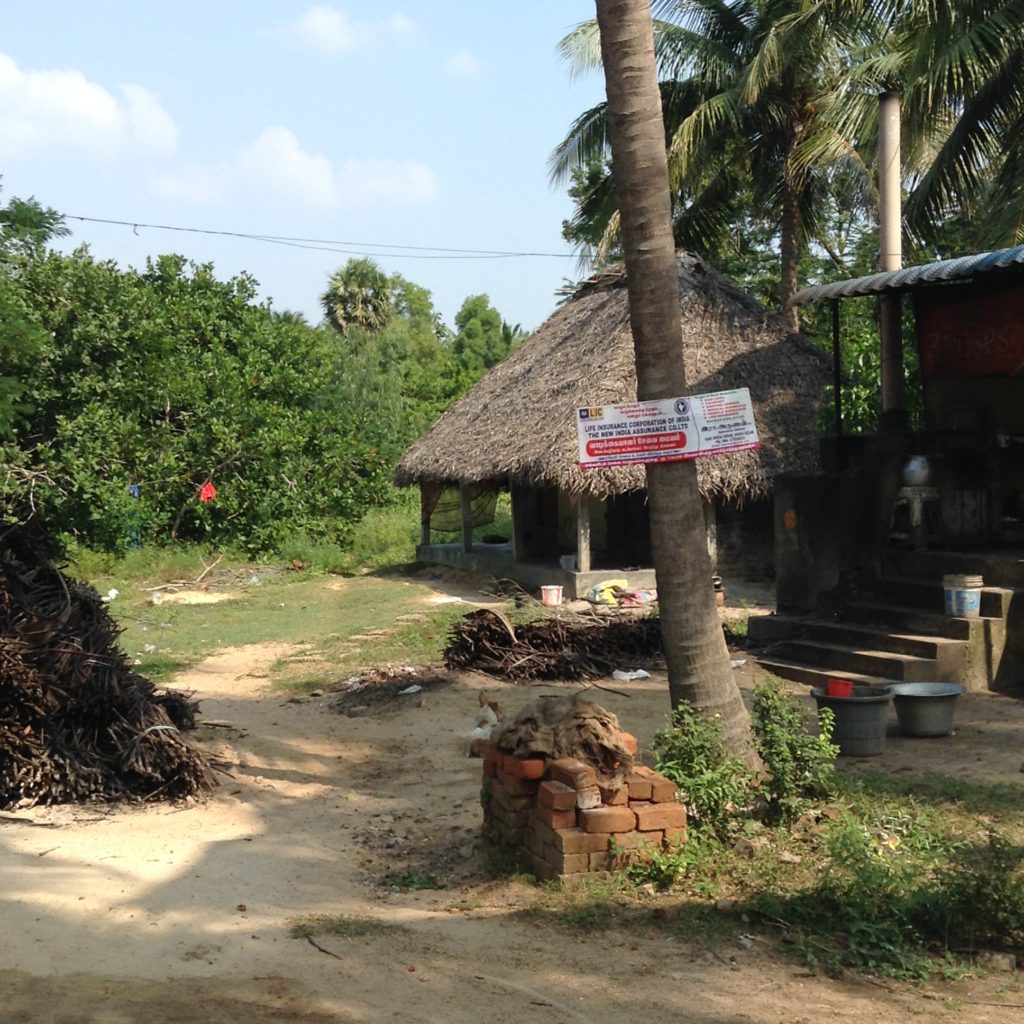
After about two hours we arrived at Mammalapuram, the site of magnificent temples, caves and rock carvings. One could have been here for a few days, but as we only had a few hours and as our understanding of ancient Indian religion, mythology and cultic observation is limited, it seemed best to concentrate only on a small group of monuments on which are related scenes from the Mahabharata, the Sanskrit epic.
These rock cut temples and carvings were created during the 7th century AD. A giant relief carving on two boulders represents the descent of the Ganges and is also known as ‘Arjuna’s Penance’. The actual story of Arjuna, standing in a yoga position on one leg, practicing ascetic self mortification, appears on the left panel, while on the right there are scenes of the natural and heavenly worlds. These are divided by a cleft carved with nagas (snakes) representing the Ganges, down which water was poured to simulate the river.
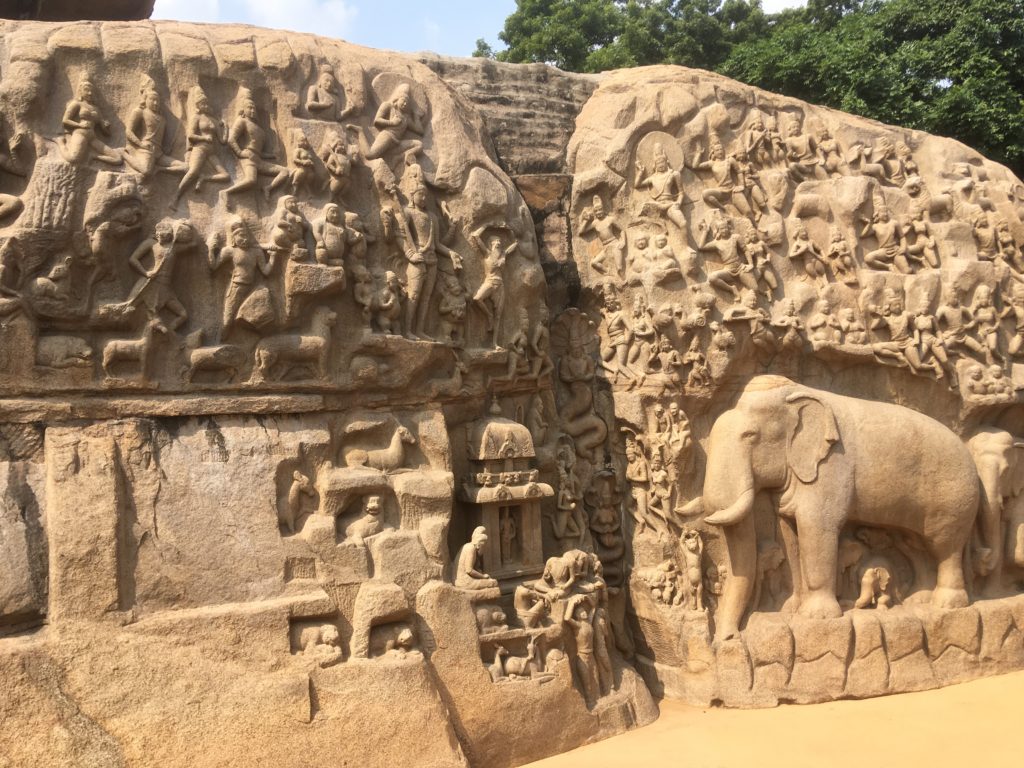
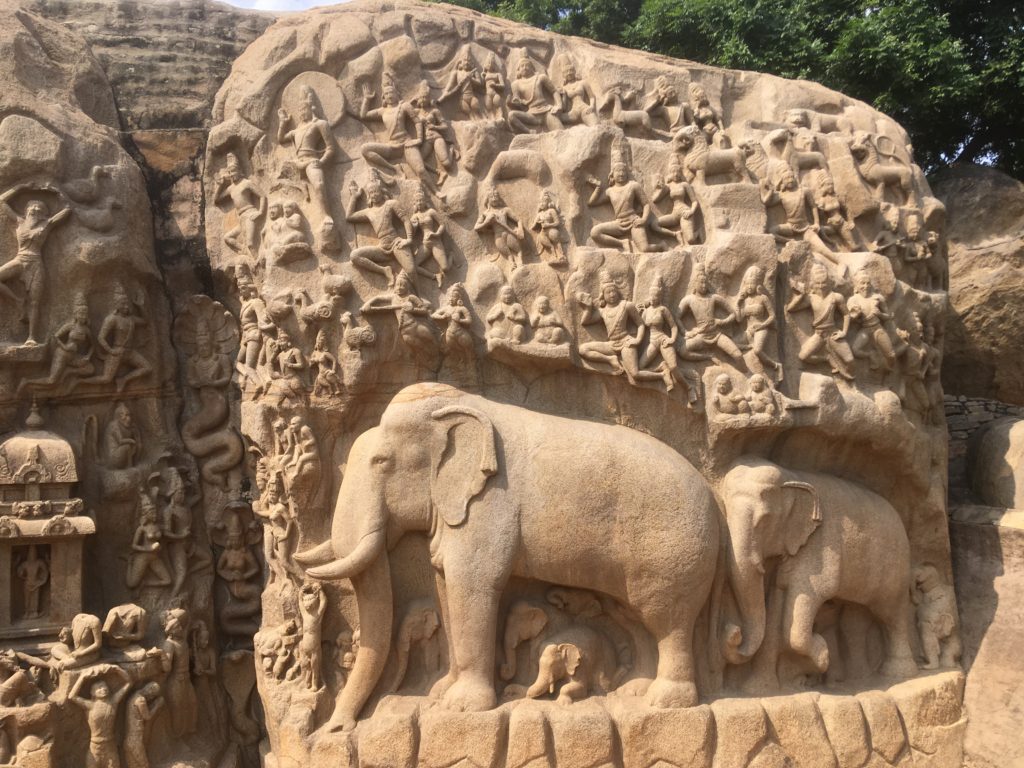
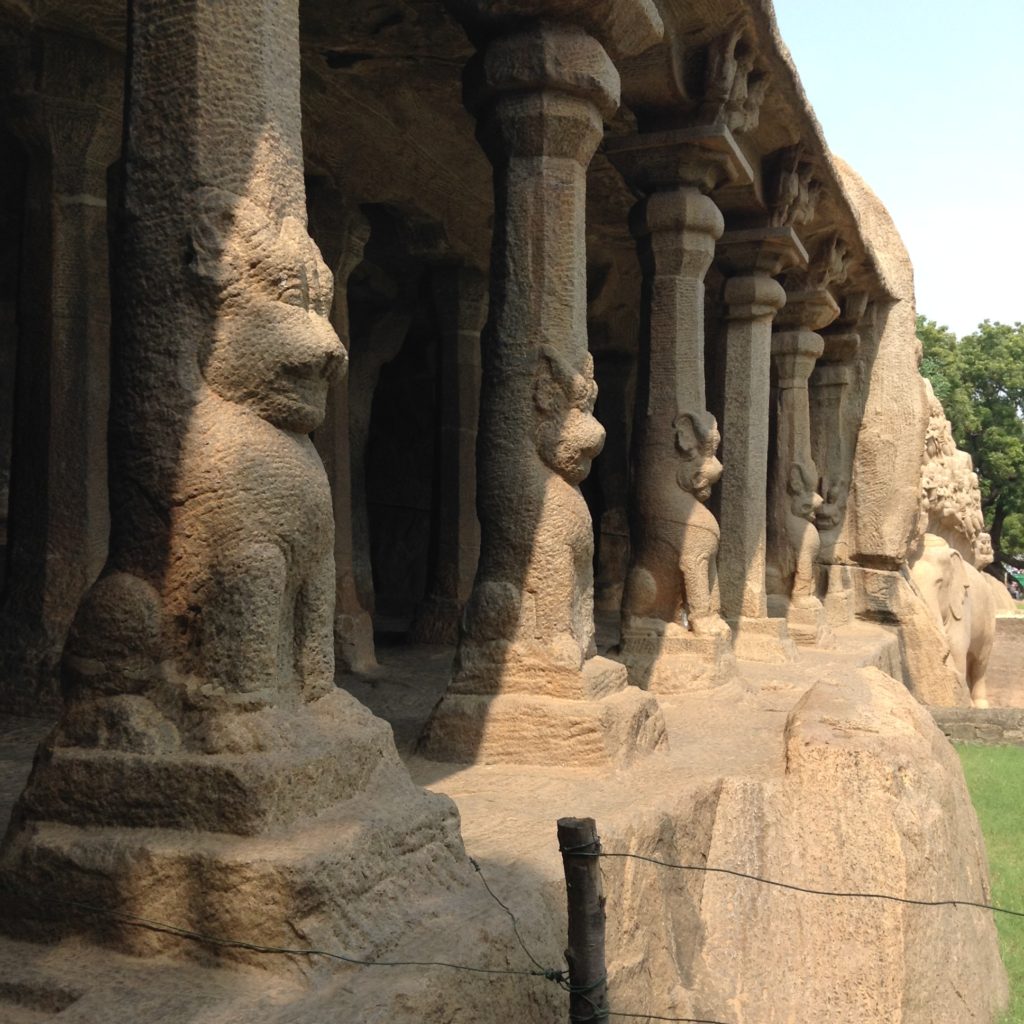
Further on are a series of cave temples, known as mandapas, some unfinished and most famously, the Krishna Mandapa, which shows Krishna lifting the Govardnhana Hill in order to protect the the villagers and their cattle from Indra’s storm.
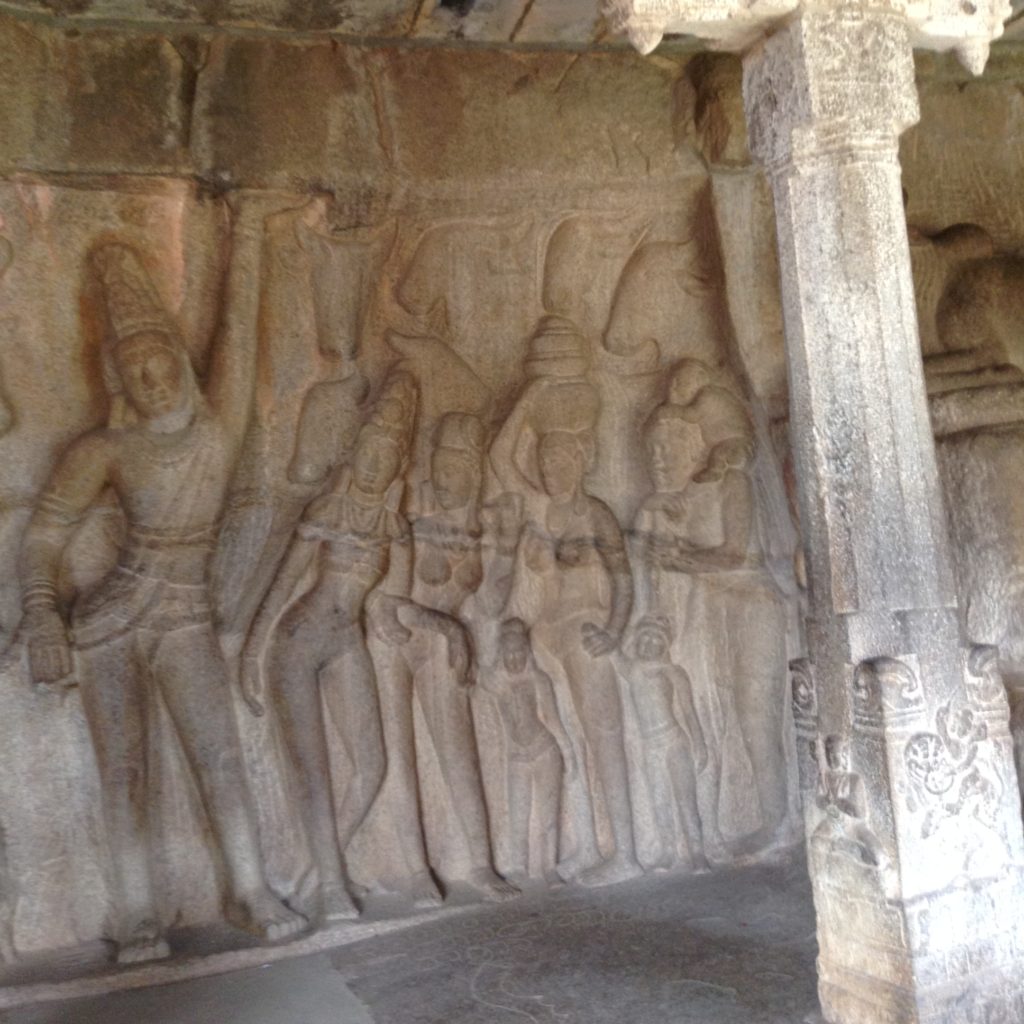

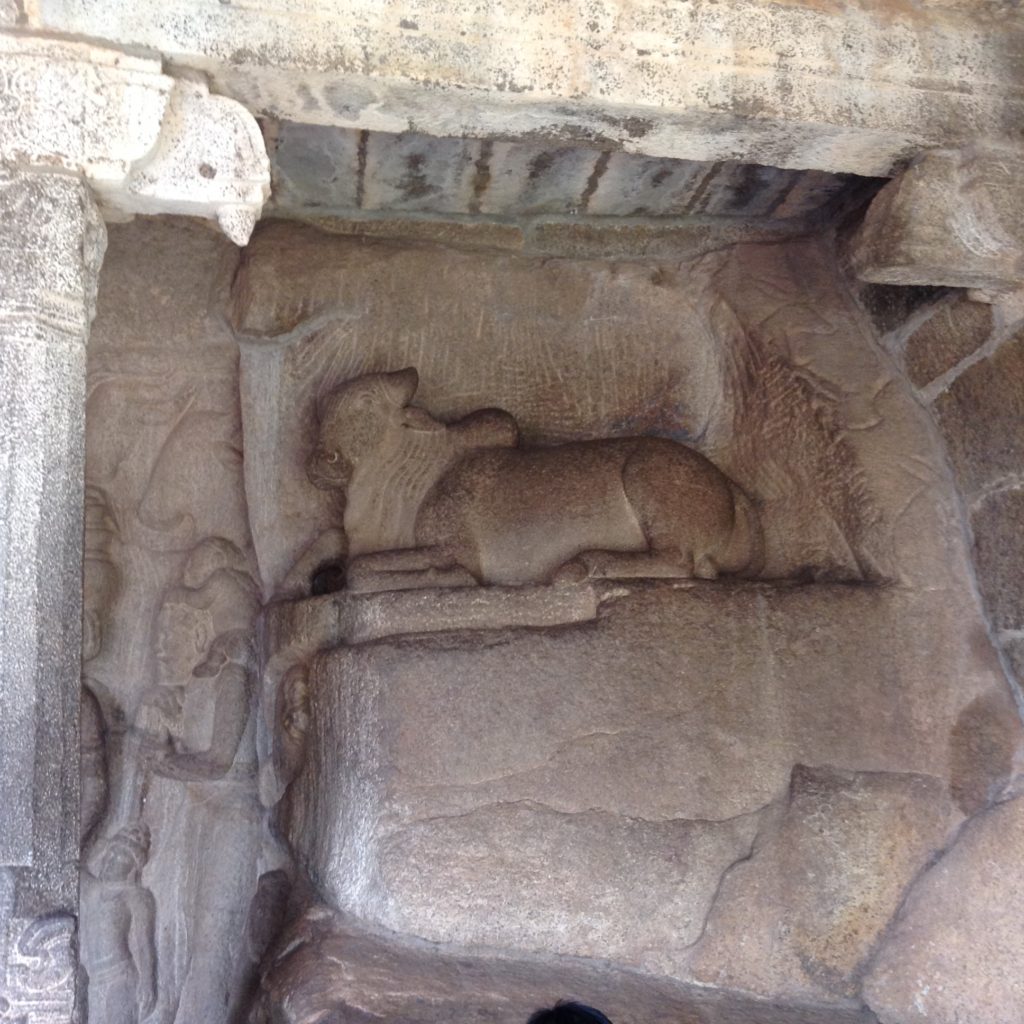
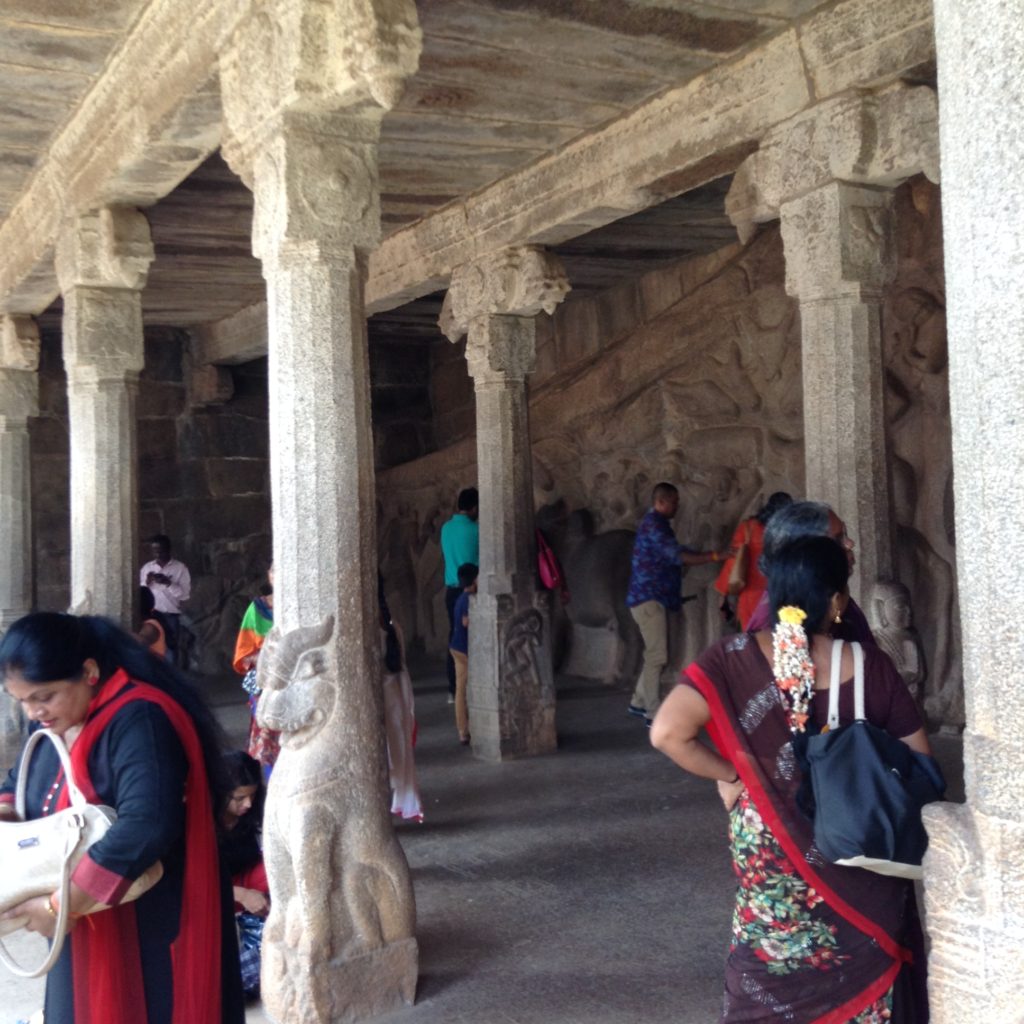
On the west face, around the corner of the main hill of Mammalapuram is a temple containing a relief of the Gajalakshmi, who is seated in a yoga asana on a lotus and holds two lotus buds.
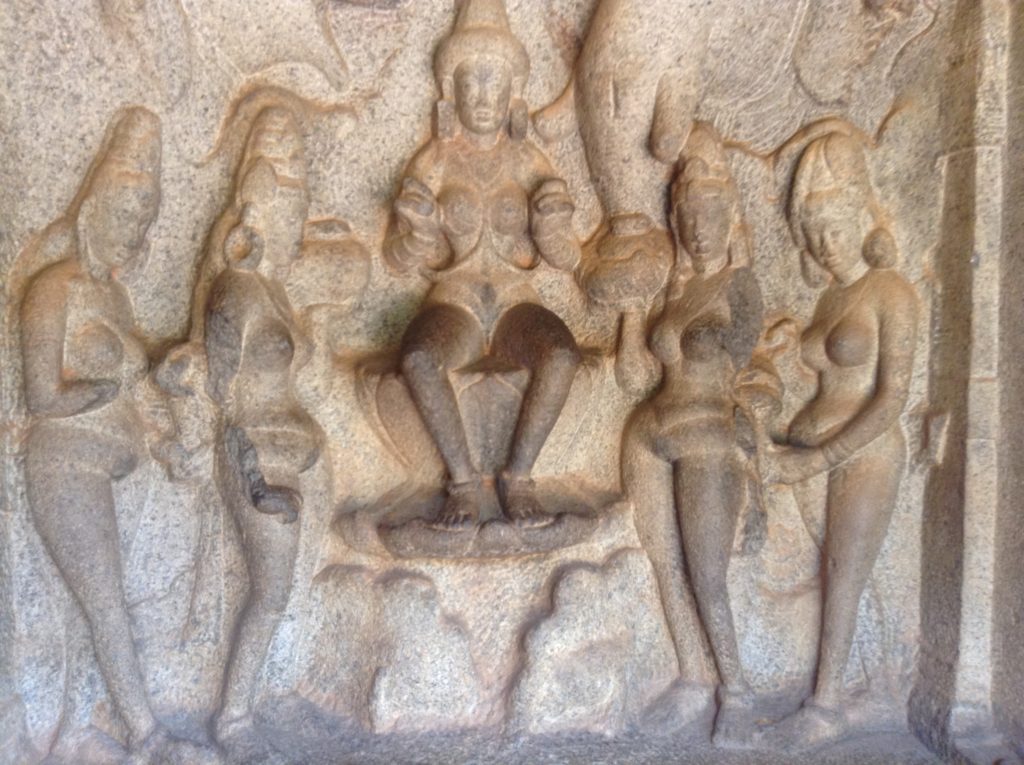
Also cut out of the rock are a series of monuments known as rathas, or chariots, carved in the shape of processional chariots. This is the Ganesha Ratha, not far from the Arjuna bas-relief.
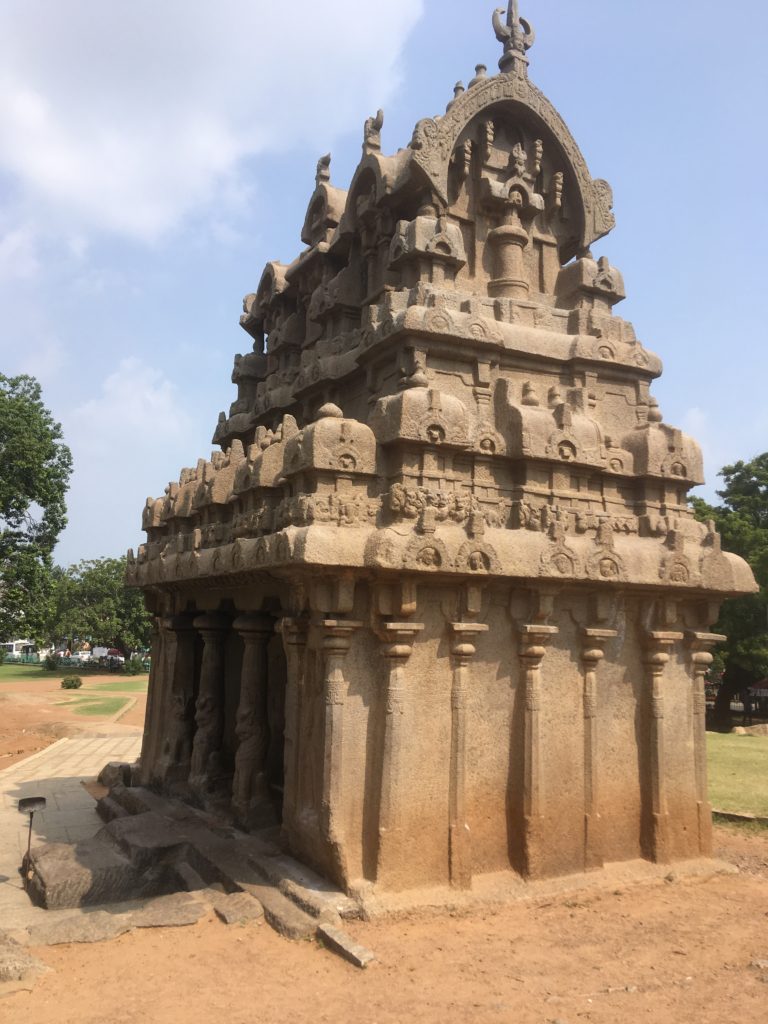
Exhausted after trying to make sense of what was only a tiny portion of the whole complex, now a UNESCO heritage site, we headed for Chennai and our hotel. This was the most nerve racking and time consuming part of the drive as the traffic in Chennai is dense, fast and incredibly noisy, with almost non-stop hooting which seems to be the main form of ‘traffic control’. Our driver handled it all with calm and nerves of steel before depositing us at our hotel.